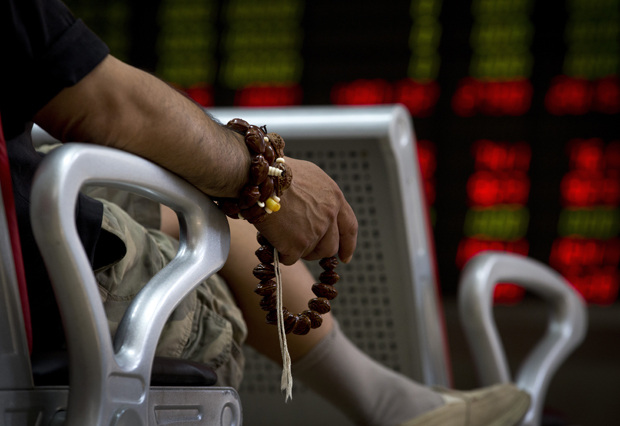
A man holds prayer beads while monitoring stock prices at a brokerage house in Beijing Monday, July 13, 2015. China’s central bank on Tuesday announced a sharply lower daily reference rate for the yuan against the US dollar, saying it was part of moves to make its exchange rate regime more market-oriented. AP
SHANGHAI, China – China’s central bank on Tuesday announced a sharply lower daily reference rate for the yuan against the US dollar, saying it was part of moves to make its exchange rate regime more market-oriented.
The People’s Bank of China (PBoC) set its so-called “central parity” for the yuan at 6.2298 to $1, compared with 6.1162 yuan the previous day, effectively 1.86 percent lower. Bloomberg News described the reduction as a record.
The move came amid speculation China is preparing to widen the trading band for the yuan for the first time since March, 2014. The unit is allowed to fluctuate two percent on either side of the daily rate on the domestic foreign exchange market.
China is also seeking to reform its yuan policy as it aims to be included in the International Monetary Fund’s basket of “special drawing rights” (SDR) reserve currencies.
The central bank described the sharply lower rate as a one-off move, though it did not use the term devaluation, and said the weakening in the currency reflected a new method of calculating central parity.
While previously the bank polled market makers to set the rate, it will now “comprehensively consider the supply and demand of foreign exchange” as well the latest international market rates for foreign currencies, according to a statement.
Analysts said data showing a slump in exports over the weekend could also have prompted the move, which should make Chinese goods cheaper overseas.
“While the weak trade figures should have pushed the fixing to the weak side, this move is still quite out of consensus,” Zhou Hao, an economist at Commerzbank AG in Singapore, was quoted by Bloomberg News as saying.
From the perspective of IMF requirements, “the yuan exchange rate will be more market-oriented going forward, and the volatility of both the onshore and offshore rates will pick up significantly,” he added.


